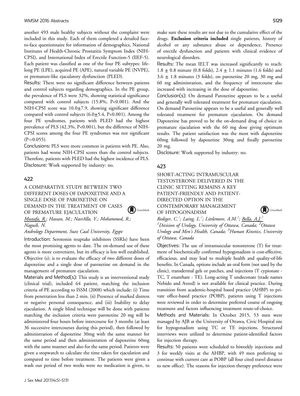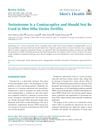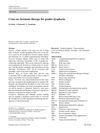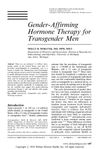Short-Acting Intramuscular Testosterone Delivered in the Clinic Setting Remains a Key Patient-Friendly and Patient-Directed Option in the Contemporary Management of Hypogonadism
December 2016
in “
The Journal of Sexual Medicine
”

TLDR Short-acting testosterone injections in a clinic are a preferred treatment for low testosterone because they work well, are convenient, and patients stick with the treatment.
In a study conducted in October 2015, 53 men with biochemically confirmed hypogonadism were managed at the University of Ottawa, Civic Hospital site using testosterone cypionate (TC) or testosterone enanthate (TE) injections. The study aimed to determine patient preferences for ongoing treatment and factors influencing their choice of treatment route. Results showed that 50 patients were scheduled for biweekly injections and 3 for weekly visits, with 49 men preferring to continue with the same care at a private office-based practice (POBP). The main reasons for preferring injection therapy were efficacy (43 men), ease of treatment (40 men), cost (16 men), no possibility of transference (7 men), and discretion (6 men). In Ontario, men over 65 with hypogonadism have their testosterone prescriptions covered by government funding, while those under 65 do not. The clinics provided the testosterone and covered the costs of needles and syringes. The POBP also allowed patients to proceed with weekly injections to maintain optimal nadir levels and minimize peak concentrations. As of June 7, 2016, 47 out of 49 patients continued their testosterone injections after transitioning from AHBP to POBP, with two stopping due to changes in health status. The compliance rate for scheduled visits was over 96%. The study concluded that short-acting intramuscular testosterone treatment delivered in the office setting remains an attractive option for patients due to its efficacy, convenience, and the ability to maintain compliance. No industry support was reported for this work.




